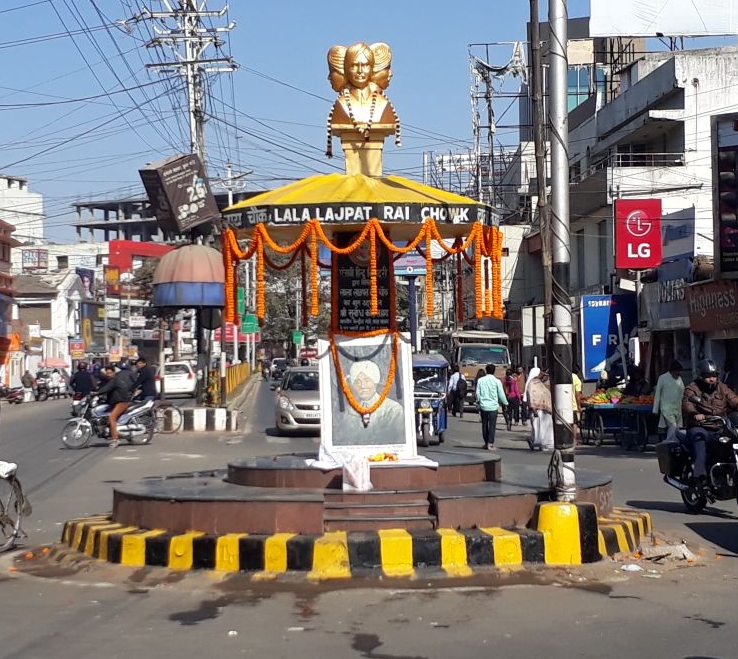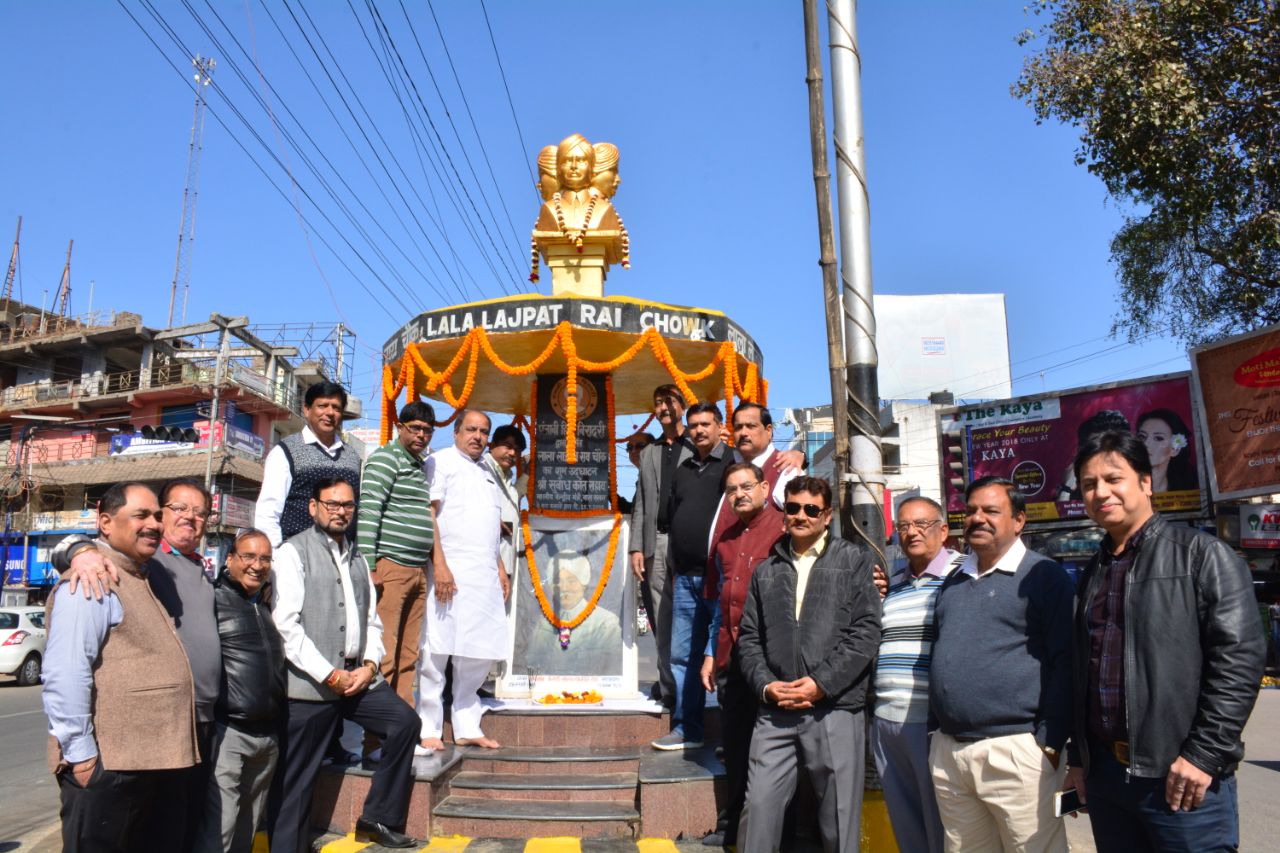
January | Sunday | 28, 2018 : In History today :: Birthday of Punjab Keshri, Lala Lajpat Rai ( 28th of January 1865 )
Lala Lajpat Rai (28 January 1865 – 17 November 1928) was an Indian freedom fighter. He played a pivotal role in the Indian Independence movement. He was popularly known as Punjab Kesari. He was one third of the Lal Bal Paltriumvirate. He was also associated with activities of Punjab National Bank and Lakshmi Insurance Company in their early stages.
Lajpat Rai was born on 28 January 1865 in a Hindu Aggarwal, a community that claims its descent from the legendary Maharaja Agrasen of Agroha, as a son of Urdu and Persian government school teacher Munshi Radha Krishan Agrawal and his wife Gulab Devi Agrawal, in Dhudike (now in Moga district, Punjab). In 1877, he was married to Radha Devi Agrawal, with whom had two sons, Amrit Rai Agrawal and Pyarelal Agrawal, and a daughter, Parvati Agrawal.

In the late 1870s, his father was transferred to Rewari, where he had his initial education in Government Higher Secondary School, Rewari (now in Haryana, previously in joint Punjab), where his father was posted as an Urdu teacher. During his early life, Rai’s liberal views and belief in Hinduism were shaped by his father and deeply religious mother respectively, which he successfully applied to create a career of reforming the religion and Indian policy through politics and journalistic writing.[6] In 1880, Lajpat Rai joined Government College at Lahoreto study Law, where he came in contact with patriots and future freedom fighters, such as Lala Hans Rajand Pandit Guru Dutt. While studying at Lahore he was influenced by the Hindu reformist movement of Swami Dayanand Sarasvati, became a member of existing Arya Samaj Lahore (founded 1877) and founder editor of Lahore-based Arya Gazette. When studying law, he became a bigger believer in the idea that Hinduism, above nationality, was the pivotal point upon which an Indian lifestyle must be based. He believed, Hinduism, led to practices of peace to humanity, and the idea that when nationalist ideas were added to this peaceful belief system, a secular nation could be formed. His involvement with Hindu Mahasabha leaders gathered criticism from the Naujawan Bharat Sabha as the Mahasabhas were non-secular, which did not conform with the system laid out by the Indian National Congress. This focus on Hindu practices in the subcontinent would ultimately lead him to the continuation of peaceful movements to create successful demonstrations for Indian independence.
In 1884, his father was transferred to Rohtak and Rai came along after the completion of his studies at Lahore. In 1886, he moved to Hisar where his father was transferred, and started to practice law and became founding member of Bar council of Hisar along with Babu Churamani. Since childhood he also had a desire to serve his country and therefore took a pledge to free it from foreign rule, in the same year he also founded Hisar district branch of Indian National Congress and reformist Arya Samaj with Babu Churamani (lawyer), three Tayal brothers (Chandu Lal Tayal, Hari Lal Tayal and Balmokand Tayal), Dr. Ramji Lal Hooda, Dr. Dhani Ram, arya samaji Pandit Murari Lal, Seth Chhaju Ram Jat (founder of Jat School, Hisar) and Dev Raj Sandhir. In 1888 and again in 1889, he had the honor of being one of the four delegates from Hisar to attend the annual session of the Congress at Allahabad, along with Babu Churamani, Lala Chhabil Das and Seth Gauri Shankar. In 1892, he moved to Lahore to practice before the Lahore High Court. To shape the political policy of India to gain independence, he also practiced journalism and was a regular contributor to several newspapers including The Tribune. In 1886, he helped Mahatma Hansraj to establish the nationalistic Dayananda Anglo-Vedic School, Lahore which was converted to Islamia College (Lahore) by Islamist zealots after 1947 partition of India.
In college where he studied law, he came into contact with other future freedom fighters, such as Lala Hans Raj and Pandit Guru Dutt. Then his family went to Hissar where he then practiced law. The to Lahore to practice in from of the high court in 1892.
In 1914, he quit law practice to dedicate himself to the freedom of India and went to Britain in 1914 and then to the USA in 1917. In October 1917, he founded the Indian Home Rule League of America in New York. He stayed in the USA from 1917 to 1920.


